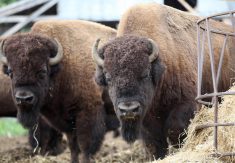Are you over-equipped compared to your neighbours? There can be good reasons for this, but too much shiny metal can create a financial strain.
Newer, bigger and better equipment is tempting when returns are good and price prospects are strong. Everyone, except maybe your spouse, loves you when you’re spending money.
It’s difficult to compare one farm to the next because of different cropping mixes, differences in the availability of labour and differing capacities to do repairs and keep older equipment running.
Read Also

High prices see cow-calf producers rushing to incorporate
Farm accountants are reporting a steady stream of cow-calf producers rushing to get their operations incorporated ahead of selling their calves this fall.
You can buy anything you like if you have more money than you know what to do with. For the rest of us, the litmus test should be whether the new equipment will make the farm money. Making that determination isn’t always easy.
I just bought an old (mid-1980s) self-propelled swather. Here’s my rationale. Let me know if you think I was right or wrong.
Canola isn’t usually a big crop on my farm, but this year I have more acres than usual – about 350. Until now, I’ve been swathing canola with a 25-foot pull type equipped with a pick-up reel.
The PT has worked all right, but going round and round a large field isn’t as convenient as back and forth. Even worse, when the canola crop is heavy and lodged, getting the swath out the hole of a PT swather can be a pain.
A lumpy job of swathing with lots of “beaver dams” creates trouble in the combining operation. Thus the desire for a pusher.
But large green lentils would be the only other crop that might be swathed and I prefer desiccating lentils and using the straight cut draper header on the combine.
For 350 acres, and often fewer acres than that, can the farm justify having a self-propelled swather? And how much money is warranted?
Used swathers from the mid-1990s are available for $20,000 to $30,000. That vintage of swather would be great to have and it would be a deal compared to the more than $100,000 I would spend on a new one.
Another option would be hiring someone. Like most producers, I really want to do it myself and I’m wary about getting the crop cut on a timely basis when other producers will have to worry about getting their own canola knocked down first.
Older swathers are likely to need repairs and I hate fixing equipment. Plus, some of the older SP swathers have the same problem as the PT models: the hole is too small for a heavy canola crop.
In the end, I bought a 25-year-old swather that for its vintage appears to be in good condition. The hole is small, but that can be re-engineered with a bit of work.
Even with modifications and some repairs, paying less than $10,000 seems a more reasonable investment considering the small acreage. Time will tell whether I made the right decision.
So, what should I do with my old PT swather? Logic says it should be sold, even if it’s worth only $5,000 or $6,000. But perhaps it should be kept as a back-up in case the new/old pusher develops a major problem.
As you can tell, I don’t run the newest equipment. In my humble opinion, it’s easy to become over-equipped and that can create problems when you run into years that are financially challenging.
Kevin Hursh is an agricultural journalist, consultant and farmer. He can be reached by e-mail at kevin@hursh.ca.















